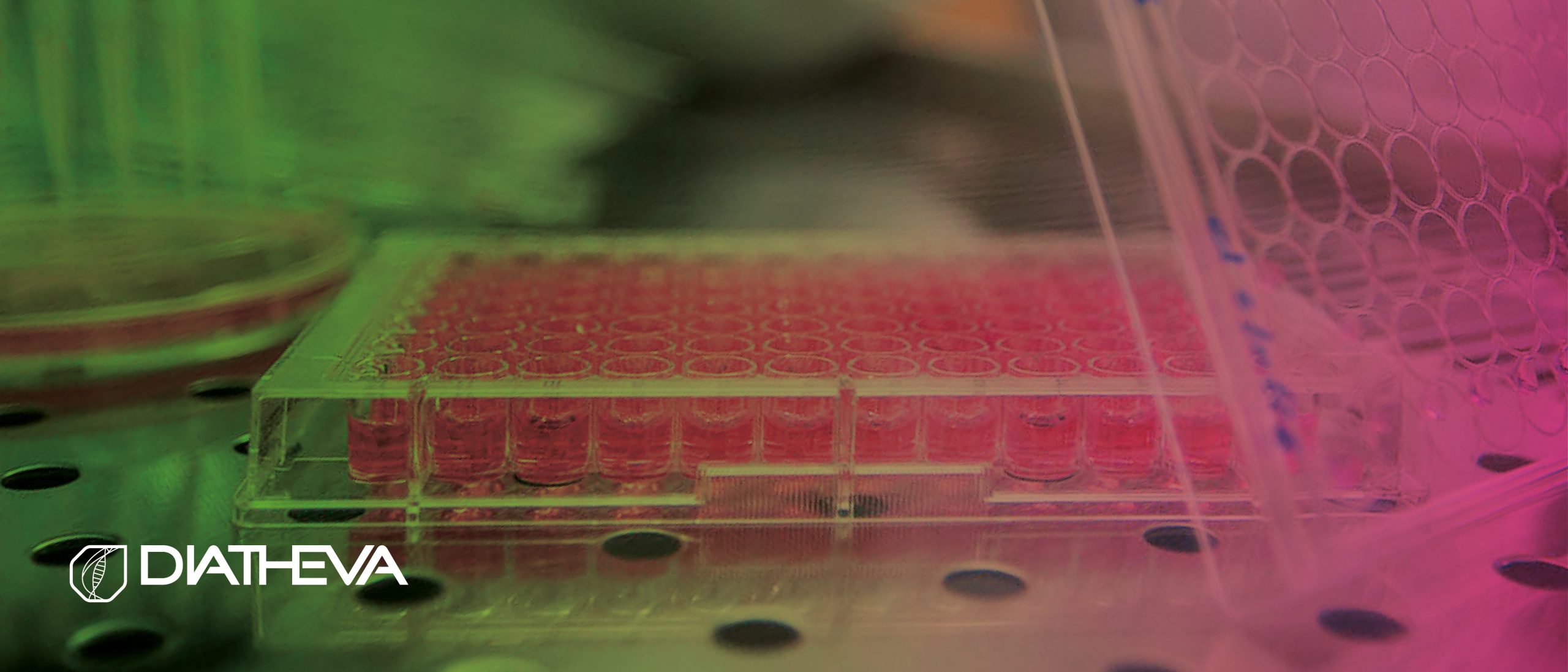Author: Sabrina Dominici
Few diagnostic tools have revolutionized their fields of application as radically as the enzyme-linked immunosorbent assay (ELISA). This revolutionary test method has established itself as a fundamental technique in laboratories around the world, providing a powerful and accurate means of identifying antigens, antibodies, and proteins. Its advent has represented a major milestone in immunodiagnostics, making its mark on a variety of fields, from medical and veterinary research to ensuring food safety. To understand its importance, let’s look at some curiosities about the history and development of the ELISA test.
ELISA’s Fundamental Principle
The core of ELISA’s effectiveness lies in its ability to use the natural specificity of the antigen-antibody interaction. It involves coating a surface (usually a plastic plate with wells) with an antigen or antibody, followed by the addition of a sample. If the sample contains the target molecule (either antigen or antibody), it will bind to the coating. To detect this binding, an enzyme-linked antibody specific to the target is added. This enzyme, upon reaction with a substrate, produces a detectable signal—usually a colour change or fluorescence—that correlates with the quantity of the target molecule.
ELISA Formats and Their Applications
Several different ELISA formats exist, each with its own advantages and disadvantages: Direct ELISA, Indirect ELISA, Sandwich ELISA, and Competitive ELISA, and Multiplex ELISA.
- Direct ELISA: In this method, the target molecule (analyte) is directly attached to a solid surface (like a microplate well) and detected by an enzyme-linked antibody that binds specifically to it. This approach is relatively quick and simple but may not be as sensitive as other ELISA formats.
- Indirect ELISA: This method uses a primary antibody to bind to the target molecule, followed by a secondary enzyme-linked antibody that recognizes and binds to the primary antibody. The secondary antibody provides signal amplification, leading to increased sensitivity compared to the direct ELISA.
- Sandwich ELISA: This format involves a two-antibody system where one antibody (capture antibody) binds to the target molecule on the solid surface, and a second enzyme-labelled antibody (detection antibody) binds to a different site on the same target molecule, creating a “sandwich”. This method is generally more sensitive and specific than direct or indirect ELISAs.
- Competitive ELISA: In this method, the target molecule in the sample competes with a known quantity of the same antigen (or antibody) for binding sites on a solid-phase antibody. The amount of signal produced is inversely proportional to the concentration of the target molecule in the sample.
- Multiplex ELISA: This is an emerging trend that allows for the simultaneous detection of multiple analytes in a single sample. This is achieved by using different coloured fluorescent dyes or other detection methods for each target molecule, allowing for high-throughput analysis.
Each ELISA format has its own purpose and is chosen based on what you want to analyse and with what precision.
ELISA Kits and Ease of Use
ELISA test kits really supercharge the use of these powerful assays. These all-in-one solutions typically include every component you need, often pre-measured and pre-diluted. This means no more hunting for individual reagents or tedious prep work, which saves a ton of time and cuts down on mistakes. Ultimately, these kits make ELISA far more accessible and user-friendly across the board, whether you’re in medical diagnostics, vet care, research, or food safety.
Diatheva’s Expertise in ELISA Development
As a prominent company, Diatheva excels in manufacturing kit-based ELISA tests and their associated reagents. Our strength lies in our skilled and experienced staff scientists, coupled with our vast experience in producing in-house proteins and antibodies, all of which contribute to our top-tier ready-to-use ELISA kits.
Diatheva is deeply committed to animal health, delivering crucial diagnostic solutions for livestock animals, specifically targeting pathogen-specific antibodies in animal samples. Simultaneously, in Clinical Diagnostics, we innovate to provide accurate and efficient IVD solutions for humans, highlighted by our unique CE-IVD approved test for Listeria monocytogenes infections.
Custom ELISA Development Services
Additionally, we offer expert ELISA bioassay method development services. Developing a robust and reliable ELISA involves careful planning, optimization, and validation. Here’s a general outline of the key steps:
- Format Selection and Assay Design
- Reagent Selection and Sourcing
- Optimization and Validation
- Assay Documentation drafting
Diatheva’s systematic approach to these development steps ensures our ELISA kits become robust and reliable tools for a wide array of research and diagnostic applications.
Sabrina Dominici is a Diagnostics R&D Senior Specialist at Diatheva. With a PhD in Biochemical and Pharmaceutical Methodologies and a strong background in biology and immunoenzymatic assays, she contributes to the research and development of diagnostic tools, focusing on antibody generation and ELISA-based technologies. Her work supports the advancement of high-quality, innovative solutions for diagnostics in clinical and research applications.
REFERENCES
Engvall, E., & Perlmann, P. (1971). Enzyme-Linked Immunosorbent Assay (ELISA): Quantitative Assay of Immunoglobulin G. Immunochemistry, 8(9), 871-874. This paper details the original development of ELISA.
Yalow, R. S., & Berson, S. A. (1960). Immunoassay of Endogenous Plasma Insulin in Man. Journal of Clinical Investigation, 39(7), 1157–1175. Early work on radioimmunoassay that preceded ELISA.
Schuurs, A. H., & van Weemen, B. K. (1971). Immunoassay Using Antigen-Enzyme Conjugates. FEBS Letters, 15(3), 232-236. This research contributed to the parallel development of ELISA.
Lequin, R. M. (2005). Enzyme Immunoassay (EIA)/Enzyme-Linked Immunosorbent Assay (ELISA). Clinical Chemistry, 51(12), 2415–2418. A historical review of ELISA development and its applications.
Mahon, C. R., Lehman, D. C., & Manuselis, G. (2018). Textbook of Diagnostic Microbiology (6th ed.). Elsevier. This textbook offers a broad overview of diagnostic tools, including ELISA.

